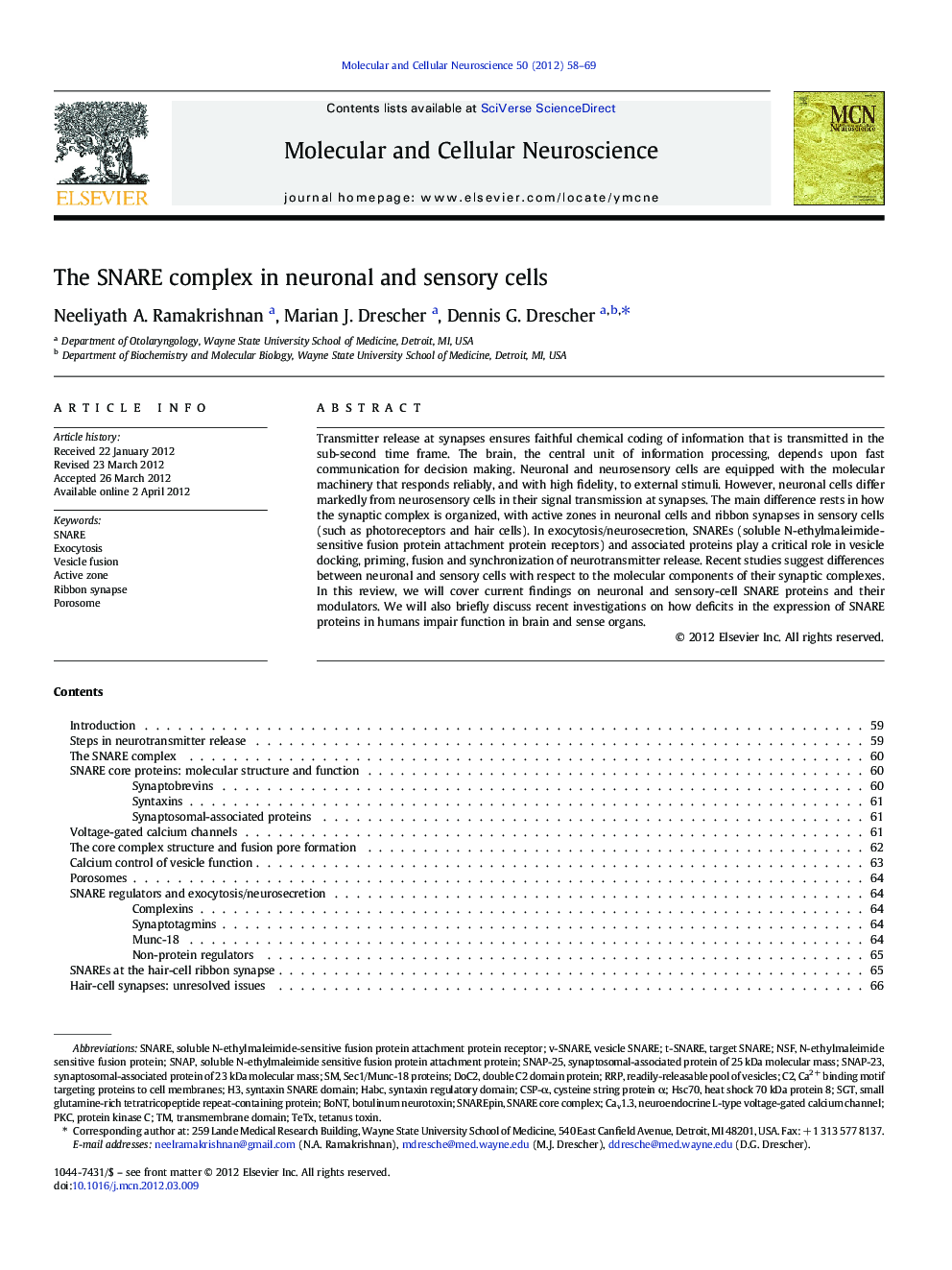| کد مقاله | کد نشریه | سال انتشار | مقاله انگلیسی | نسخه تمام متن |
|---|---|---|---|---|
| 2198601 | 1099377 | 2012 | 12 صفحه PDF | دانلود رایگان |

Transmitter release at synapses ensures faithful chemical coding of information that is transmitted in the sub-second time frame. The brain, the central unit of information processing, depends upon fast communication for decision making. Neuronal and neurosensory cells are equipped with the molecular machinery that responds reliably, and with high fidelity, to external stimuli. However, neuronal cells differ markedly from neurosensory cells in their signal transmission at synapses. The main difference rests in how the synaptic complex is organized, with active zones in neuronal cells and ribbon synapses in sensory cells (such as photoreceptors and hair cells). In exocytosis/neurosecretion, SNAREs (soluble N-ethylmaleimide-sensitive fusion protein attachment protein receptors) and associated proteins play a critical role in vesicle docking, priming, fusion and synchronization of neurotransmitter release. Recent studies suggest differences between neuronal and sensory cells with respect to the molecular components of their synaptic complexes. In this review, we will cover current findings on neuronal and sensory-cell SNARE proteins and their modulators. We will also briefly discuss recent investigations on how deficits in the expression of SNARE proteins in humans impair function in brain and sense organs.
Journal: Molecular and Cellular Neuroscience - Volume 50, Issue 1, May 2012, Pages 58–69